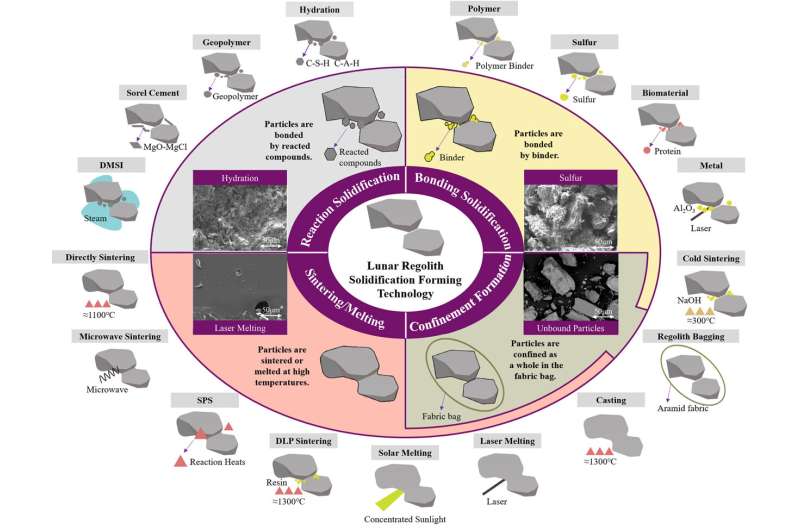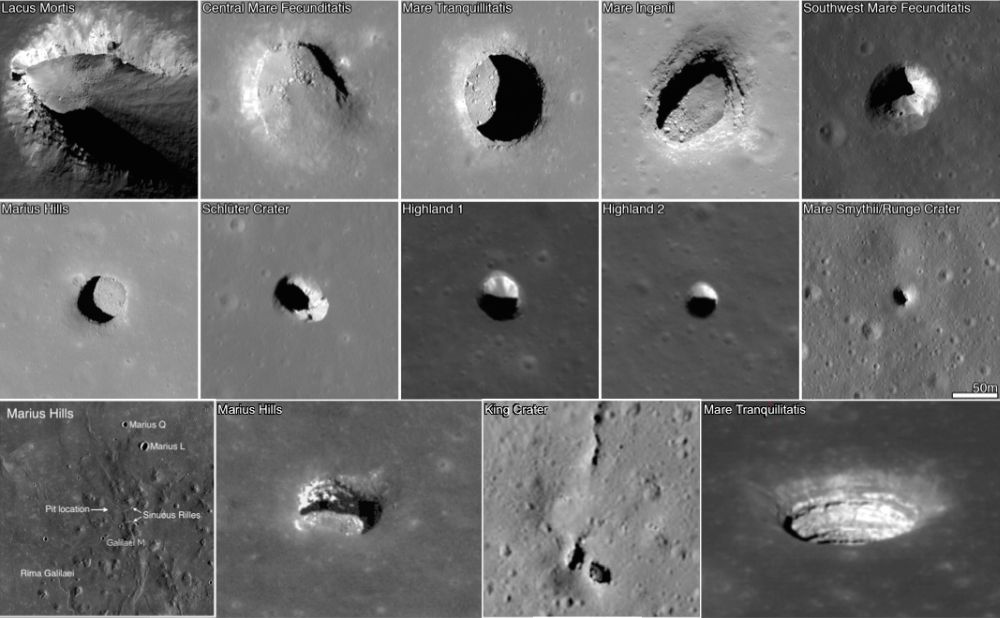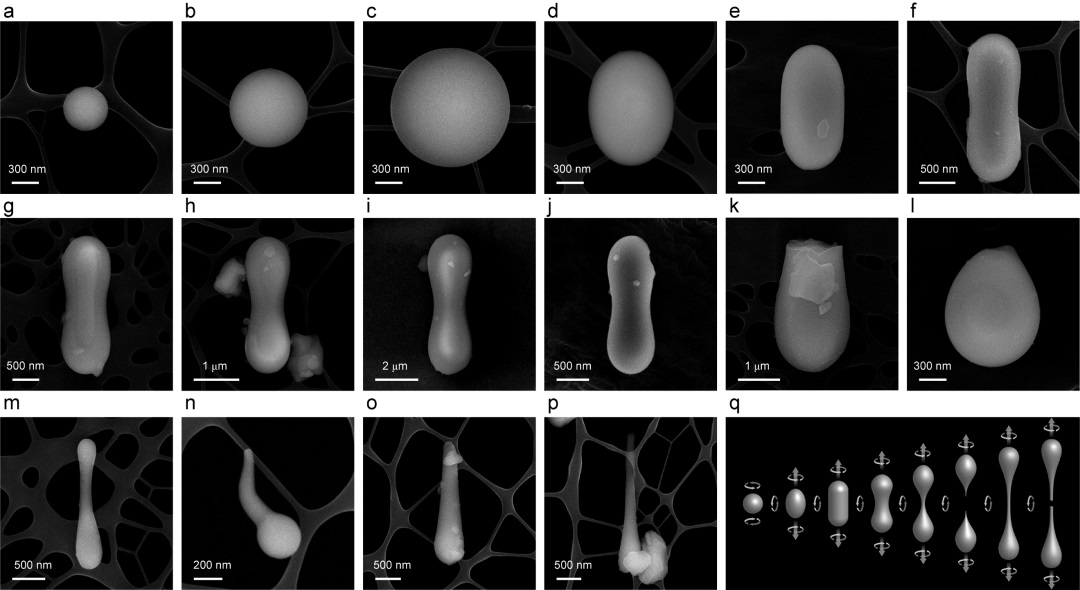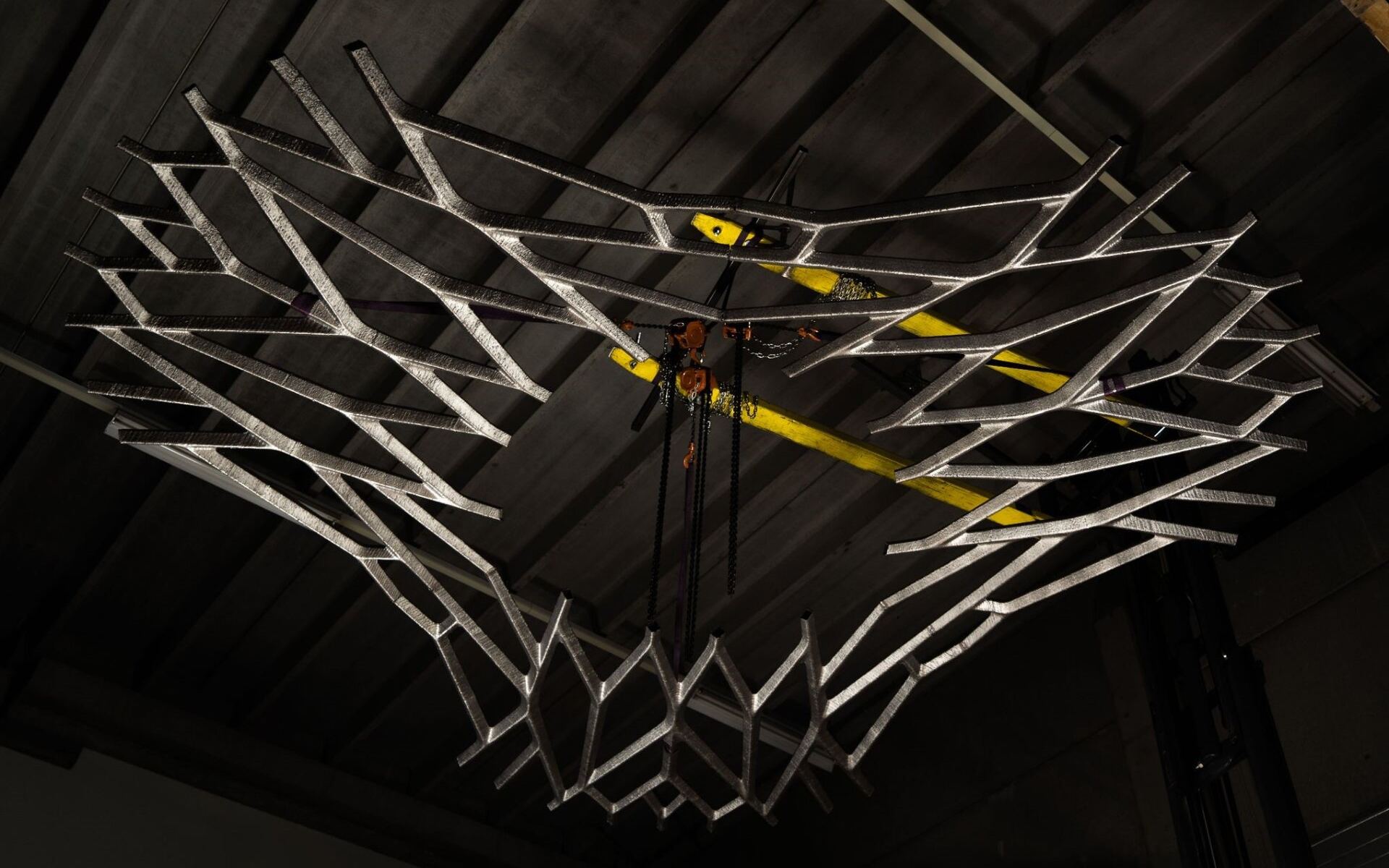As humanity returns to the Moon in the next few years, they’re going to need water to survive. While resupplies from Earth would work for a time, eventually the lunar base would have to become self-sustaining? So, how much water would be required to make this happen? This is what a recently submitted study hopes to address as a team of researchers from Baylor University explored water management scenarios for a self-sustaining moonbase, including the appropriate location of the base and how the water would be extracted and treated for safe consumption using appropriate personnel.
Continue reading “How Much Water Would a Self-Sustaining Moonbase Need?”There are Four Ways to Build with Regolith on the Moon

Over the last few years I have been renovating my home. Building on Earth seems to be a fairly well understood process, after all we have many different materials to chose from. But what about future lunar explorers. As we head closer toward a permanent lunar base, astronauts will have very limited cargo carrying capability so will have to use local materials. On the Moon, that means relying upon the dusty lunar regolith that covers the surface. Researchers have now developed 20 different methods for creating building materials out of the stuff. They include solidification, sintering/melting, bonding solidification and confinement formation. But of all these, which is the best?
Continue reading “There are Four Ways to Build with Regolith on the Moon”Engineers Design Habitats for the Moon Inspired by Terminite Mounds
Through the Artemis Program, NASA intends to send astronauts back to the Moon for the first time since the Apollo Era. But this time, they intend to stay and establish a lunar base and other infrastructure by the end of the decade that will allow for a “sustained program of lunar exploration and development.” To accomplish this, NASA is enlisting the help of fellow space agencies, commercial partners, and academic institutions to create the necessary mission elements – these range from the launch systems, spacecraft, and human landing systems to the delivery of payloads.
With NASA funding, a team of engineers from the University of Arizona College of Engineering (UA-CE) is developing autonomous robot networks to build sandbag shelters for NASA astronauts on the Moon. The designs are inspired by cathedral termite mounds, which are native to Africa and northern Australia’s desert regions. Their work was the subject of a paper presented at the American Astronautical Society Guidance, Navigation, and Control (AAS GNC) Conference, which took place from February 1st to 7th in Littleton and Breckinridge, Colorado.
Continue reading “Engineers Design Habitats for the Moon Inspired by Terminite Mounds”Japan Tests Robotic Earth-Moving Equipment in a Simulated Lunar Jobsite
Japan has embarked on an exciting new lunar program that will test automated remote construction machinery for the Moon. In 2021, representatives from the Kajima Corporation, the National Research and Development Agency, the Japan Aerospace Exploration Agency (JAXA), and the Shibaura Institute of Technology announced they would be working with the Ministry of Land, Infrastructure, Transport, and Tourism (MLIT) to develop a next-generation construction system (A4CSEL®) that will enable the creation of lunar infrastructure.
This new collaborative venture, known as the Space Unmanned Construction Innovative Technology Development Promotion Project, will create an A4CSEL system capable of operating in the harsh lunar environment. In a recent statement, Kajima announced that it would connect the approximately 20-square kilometer (7.72 mi2) Kashima Seisho Experimental Field with JAXA’s Sagamihara Campus. Here, they are conducting experiments to validate automated remote construction machinery in a simulated lunar environment, which could lead to the creation of a lunar base!
Continue reading “Japan Tests Robotic Earth-Moving Equipment in a Simulated Lunar Jobsite”Chinese Astronauts May Build a Base Inside a Lunar Lava Tube

Caves were some of humanity’s first shelters. Who knows what our distant ancestors were thinking as they sought refuge there, huddling and cooking meat over a fire, maybe drawing animals on the walls. Caves protected our ancient ancestors from the elements, and from predators and rivals, back when sticks, stones, furs and fire were our only technologies.
So there’s a poetic parallel between early humans and us. We’re visiting the Moon again, and lunar caves could shelter us the way caves sheltered our ancestors on Earth.
Continue reading “Chinese Astronauts May Build a Base Inside a Lunar Lava Tube”
Glass Fibers in Lunar Regolith Could Help Build Structures on the Moon

Through the Artemis Program, NASA plans to send the first astronauts to the Moon in over fifty years. Before the decade is over, this program aims to establish the infrastructure that will allow for a “sustained program of lunar exploration and development.” The European Space Agency (ESA) also has big plans, which include the creation of a Moon Village that will serve as a spiritual successor to the International Space Station (ISS). China and Roscosmos also came together in June 2021 to announce that they would build the International Lunar Research Station (ILRS) around the lunar south pole.
In all cases, space agencies plan to harvest local resources to meet their construction and long-term needs – a process known as In-Situ Resource Utilization (ISRU). Based on samples returned by the fifth mission of the Chinese Lunar Exploration Program (Chang’e-5), a team of researchers from the Chinese Academy of Sciences (CAS) identified indigenous glass fibers for the first time. According to a paper they authored, these fibers were formed by past impacts in the region and could be an ideal building material for future lunar bases.
Continue reading “Glass Fibers in Lunar Regolith Could Help Build Structures on the Moon”China is Planning to Land Humans on the Moon by 2030 as Part of its Ambitious Lunar Agenda

Weiren Wu, the Chief Designer of the Chinese Lunar Exploration Program (CLEP), recently announced an ambitious plan to put Chinese footprints on the lunar surface by 2030. This announcement came just prior to this year’s Space Day of China, an annual event celebrated on April 24th meant to showcase the space industry achievements of the China National Space Administration (CNSA).
Continue reading “China is Planning to Land Humans on the Moon by 2030 as Part of its Ambitious Lunar Agenda”Artemis Astronauts Could Rely on Solar Cells Made out of Moon Dust
Within the next decade, several space agencies and commercial space partners will send crewed missions to the Moon. Unlike the “footprints and flags” missions of the Apollo Era, these missions are aimed at creating a “sustained program of lunar exploration.” In other words, we’re going back to the Moon with the intent to stay, which means that infrastructure needs to be created. This includes spacecraft, landers, habitats, landing and launch pads, transportation, food, water, and power systems. As always, space agencies are looking for ways to leverage local resources to meet these needs.
This process is known as in-situ resource utilization (ISRU), which reduces costs by limiting the number of payloads that need to be launched from Earth. Thanks to new research by a team from the Tallinn University of Technology (TalTech) in Estonia, it may be possible for astronauts to produce solar cells using locally-sources regolith (moon dust) to create a promising material known as pyrite. These findings could be a game-changer for missions in the near future, which include the ESA’s Moon Village, NASA’s Artemis Program, and the Sino-Russian International Lunar Research Station (ILRS).
Continue reading “Artemis Astronauts Could Rely on Solar Cells Made out of Moon Dust”New Idea: Use the Starship HLS to Create a Lunar Base!
Between the multiple space agencies planning to conduct crewed missions to the lunar surface, the many commercial entities who’ve contracted them to assist them, and proposals for lunar bases, the message of the modern space age is clear: We’re going back to the Moon. And this time, we intend to stay! Just like the efforts of the Apollo Era, this entails several challenges, ones that require “the best of our energies and skills.”
These challenges are leading to all sorts of innovative solutions, which recognize the need to leverage lunar resources to provide protection against the environment and see to peoples’ needs. A new proposal made by a team from the International Space University (ISU) has found a novel way to do just that. Their proposal? Use the SpaceX Starship Human Landing System (HLS) as the foundation for a lunar base.
Continue reading “New Idea: Use the Starship HLS to Create a Lunar Base!”This is a 3D-Printed Steel Floor Prototype for a Lunar Habitat
In this decade, multiple space agencies and commercial space entities will be taking us back to the Moon. But unlike the Apollo Era, the goal of these programs is not “footprints and flags,” but to establish the necessary infrastructure to keep going back. In particular, NASA, the ESA, Roscosmos, and China are all planning on establishing outposts that will allow for scientific research and a sustained human presence.
The ESA is currently showcasing what its outpost will look like at the 17th annual Architecture Exhibition at the La Biennale di Venezia museum in Venice. It’s known as the International Moon Village, which was designed by the architecture firm Skidmore, Owings & Merrill (SOM) with technical support from the ESA. This same company recently unveiled a prototype of the skeletal metal component that will one day be part of the Village’s lunar habitats.
Continue reading “This is a 3D-Printed Steel Floor Prototype for a Lunar Habitat”





